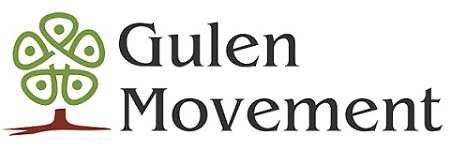
The Gülen movement incubated in1960s, became nationwide in 1980s when it was recognized by masses and started to globalize in 1990s through educational initiatives in many countries.
The movement (also known as Hizmet movement) started off late 1960s in Izmir, Turkey. We can better analyze Gülen movement if look at it in 10-year periods. Hizmet, a Turkish word, which means simply ‘service’ refers to altruistic service to the ‘common good’ in our context. We will use that word in this article for the name of the movement.
1970 – 1980
Focus on Education
The movement’s focus for the past four decades has been to address local needs with universal human values. At the end of 1960’s, in Turkey, there was a great need for better educational opportunities throughout the country. Not only there was great room for improvement in terms of educational quality, but also education was not available to every child. Although the state was working hard towards addressing both matters, more could have been done. Gulen, and those inspired by his ideas, showed an excellent example of civic engagement by filling in to help with these two crucial issues of Turkey’s secondary school education system.
To address this shortcoming, they put together the first project of what would be later called Hizmet Movement, which comprised few university students and a handful of small-business owners back then. The project’s aim was to find ways to accommodate out-of-town students in whose hometowns there was a lack of a school, or a good one. At the beginning, the project started by the aforementioned students and businessmen setting aside funds from their own pockets for educational and living expenses of these out-of-town students, and building dormitories that these students can live in while away from their families.
These dormitories also served as shelters against bad habits like drug use and involvement in violent political extremisms. Many leftist and rightist groups were killing each others before 1980 and more than 5000 people were dead in these incidents. That’s why many families, those years and later, considered the Gulen movement the best tool to protect their children.
Eventually, the project proved to be successful as the number of such out-of-town students grew all the while the number of those inspired by Gulen also grew. As these students were closely watched for their schoolwork, graduates started to become extremely successful in college entrance exams, and went on to the best universities in Turkey. In just a little over a decade, families who never planned to send their children to a middle school, now had their children attending the best universities in the country. This enormous success opened the doors for further projects.
In addition to schools, 1970’s also marked the beginnings of college entrance exam preparation institutions.
1980 – 1990
With the success of dormitories, and willingness of the movement’s volunteers to do more good came the idea of starting new schools. First three schools were opened in 1982 in different cities. Although, due to financial limitations, the beginnings of the first schools were rather difficult, as the number of people inspired by Gulen grew, and as people from various cities started to visit and witness first hand dormitories and schools, they formed their own independent boards to start dormitories and schools in their own cities.
One important strength of schools was that they were able to recruit graduates from universities who entered there through Hizmet related schools and educational institutions. This created a very young and dynamic environment where they could give back to the movement that helped them getting there. Instead of going into much better paying careers, they were choosing to become teachers to educate next generations of students.
Students of Hizmet inspired schools proved to be also successful in their social lives. They were respectful to their parents, and teachers; they were educated with ideals of living for others, being self-sacrificial, and hard working. They were free of bad habits like smoking and drinking were protected from being part of radicalism and violent political movements.
Although schools are directed by Hizmet inspired people, they are regulated by the state like any other private or state school.
In the meantime, Gulen and participants of Hizmet Movement started to work on a whole new project, which turned out to be highly influential in today’s Turkey. They saw a need for publications that address values that they have been working for tirelessly. Thus first came Sizinti in 1979, a monthly magazine of science and culture, and then came Zaman in 1987, the daily Turkish newspaper that today has the highest circulation in Turkey by a large margin.
1990 – 2000
Following the collapse of Soviet Union, Hizmet Movement saw a great need for education in the newly formed Turkic countries. With the same ideals, and using similar methods, volunteers of the movement, once again, showed great civic engagement, this time at an international level, to establish schools just like the ones that they established in Turkey. This required great amount of self-sacrifice as hundreds of newly college graduates and small-business owners left their beloved country to move to Turkic countries for their ideals and principles of education. As these educational institutions were extremely well received, and also supported by the Turkish state and local states, and as their success became prominent, Hizmet Movement started to be internationally known, and appreciated. This led volunteers to work with many different states and countries where there is need for better education and establish similar schools following the same ideals and principles. Thus, today, there are Hizmet inspired schools in more than 140 different countries. They are all regulated by state officials, and run by local and independent board of directors that comprise Hizmet inspired individuals as well as those who are not.
Start of dialogue era
While volunteers have been working tirelessly all around the world for better education for everyone, Gulen, once again, made a call for yet another vital social/cultural issue, namely conflict and disunity among people. In 1990’s, one could easily observe that in Turkey, many different fractions of the social, political, and cultural life were in strong conflict with each other, or so did it seem. Leftist/rightist, Turkish/Kurdish, Sunni/Alevite, religious/secular, liberal/conservative, among many others seemed to be forming the conflictual ends of sociocultural and sociopolitical fabric of the country. There were countless misconceptions, and stereotypical essentializations about each other. Most importantly, the divisions seemed to deepen by the hour. Observing and analyzing this local social rupture, Gulen, himself initiated the movement, which will later be called “dialogue”, and met with religious authorities – including various Christian and Jewish leaders – politicians, artists, state officials, and public intellectuals, among others.
On the other hand, Hizmet volunteers, through establishing institutions such “Gazeteciler ve Yazarlar Vakfi” (Journalists and Writers Associations) reached out to every possible corner of the society, and organized small and large scale events to bring people together. Key here was not to change or modify anyone’s opinion about any issue, but it was to be able to sit together with each other, and to be able to interact with each other.
Today, Abant Platform under Journalists and Writers Associations functions like a think tank that bring intellectuals, academics and experts on a regular base to discuss vital issues of not only Turkey but also of the world.
2000-2010
While, conflict and disunity seemed to be the local problem in Turkey, once Hizmet Movement turned its attention also to other countries through schools, it saw the same problem persisting all around the world. Thus, came the global dialogue activities. It started out as Interfaith Dialogue as religious leaders proved to be the most receptive to the idea at first. Then, as in Turkey, many from various backgrounds started to embrace the principles of dialogue. Today, around the world, through local partnerships, Hizmet volunteers are co-organizing small and large scale, weekly, monthly and yearly events and meetings in which people from various backgrounds come together, share food with each other, and interact with one with another.
The sociohistorical, cultural and interreligious ruptures, especially after 9-11, seem to be addressed only through such efforts where differences are appreciated, and commonalities are emphasized in peaceful gatherings. Learning to be able to live together is a process that people all around the world has to go through in order to solve global conflicts and to establish peace in this world. Hizmet volunteers gather themselves and others around this principle to serve humbly for the world peace. Thus, earlier projects, such as schools, or media outlets, also focus on establishing this principle in their daily workings. For instance, in various different countries, Hizmet inspired schools are constituted by students and teachers from many different ethnic, religious, and cultural backgrounds. Hizmet inspired publications are effectively sensitive to matters of understanding, togetherness, and global peace.
Humanitarian aid projects
This decade also experienced yet another project by Gulen calling for help for those who need it the most. By establishing organizations such as “Helping Hands” and “Kimse Yok Mu” (is there anybody out there), volunteers answered this call, and started fundraising activities and relief fund efforts around the world. These organizations were able to provide millions of dollars to areas of hunger, poverty, or to areas hit by earthquakes and tsunamis. People around the world are volunteering to actually go these areas to bring help first hand through such organizations. Key here, again, is the attention to local needs. In some areas, volunteers are working to build hospitals, in others; they bring food to the hungry, yet in others; volunteer doctors are helping to cure illnesses. From Darfur to Haiti, hundreds of Hizmet inspired volunteers are working tirelessly to bring help to those who need it the most.
What once started as a local project in one neighborhood with universal human values in mind, now, reaches out to the whole world for a better and peaceful future.
2010-Present
What this decade holds for Hizmet movement is yet to be experienced. As the number of people, organizations, institutions, and partnerships grew, harsh criticisms are also articulated through various means. Volunteers of the movement engage these criticisms, reflexively, through proactive work, so that the precious work that they have been involved in is known true to its nature.
